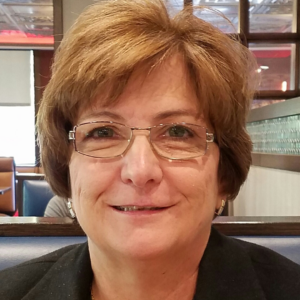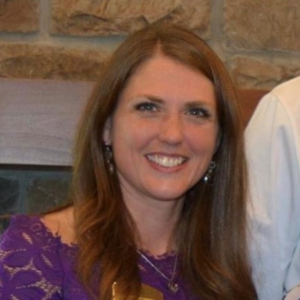Multisensory room and specialized dementia programming
In 2006, the Centers for Medicare & Medicaid Services (CMS) issued new guidance for activities that specifically directed facilities to improve activities for residents with Alzheimer’s disease and other dementias. Facilities are expected to provide all residents with their own, personalized activities program, which includes special, individual plans developed for residents with varying stages of dementia. Even those with advanced dementia are expected to be included in some type of “person-centered” activities.
Multisensory rooms and specialized dementia programming provide group activities in an environment that is success-oriented, failure-free, purposeful, and meaningful. Our multisensory room at the Portage County Health Care Center in Stevens Point, Wisconsin has been in use since March 2007, and I have developed a list of 24 goals for use of these programs (“24 Goals for Multisensory Room Programs,” p. 21). The Dementia-Specific Programming (a new outcome-based program that I developed specific to our facility and residents) was initiated in April 2007. Residents have shown progressive positive outcomes as a result of these and other specialized programs, which target 20 different outcomes. Some of these target outcomes are increased vocal attempts, increased physical movement, decreased anxiousness/agitation, improved attention span, and improved memory recall, to name a few.
Various sensorial materials used include (but are not limited to): relaxing music/CDs, videos, and DVDs; entertaining videos appropriate to residents with dementia; manipulatives (tracking boards, nuts and bolts, PVC plumbing pipes, magnetic boards, bead boards, stacking peg boards and other all-in-one boards, with no loose pieces that residents might put in their mouths if they are using unassisted); a waterfall; a bubble wall; fiberoptic lights; a water fountain; chimes; lighting effects/various equipment; aromatherapy/diffuser; projector with effects wheel; lava lamps and other tabletop features; and various other sensory items.
Who should be included in multisensory room and small group dementia-specific programs? Individuals with dementia/cognitive impairment; those who display repetitive, self-stimulating actions (i.e., rubbing, picking, etc.); those with limited or absent verbal skills; those who do not benefit from a group setting; those who have patterns of agitation and anxious behaviors; those with limited responses or who are nonresponsive; and individuals with chronic pain issues.
Unlike typical activity programs that place pressure on the resident to perform—which for dementia residents leads to anxiety, agitation, and frustration—these programs introduce pleasurable experiences that provide residents with the opportunity to attain happiness and purpose, and to improve their quality of life. Residents have control because there are no rules. These programs also actively engage the residents in activities that gently stimulate their senses throughout the day.
A Day in the Life
A typical day (although there really are no “typical” days on a dementia unit) includes: AM care and breakfast, nursing staff take care of any physical needs, then take the residents to the multisensory room and set up activities for them. Activity staff are on the unit for a 9:00 a.m. small group, which typically works on cognition, reminiscence, and memory recall skills; earlier in the day is best for this type of activity with residents with dementia. I have purchased or otherwise created numerous supplies and props for activities that allow us to incorporate the 20 targeted goals of the program. Our groups used to last 15 to 30 minutes if we were lucky, but now they last 30 to 45 minutes. The staff need to make way for the large group program offered at 10:00 a.m. Some of the residents take part in the large group, and others use the multisensory room or engage in some other form of independent activity.
Lunch is at 11:30 a.m., followed by attention to personal needs. At 1:30 p.m., either small group or one-on-one interactions are offered on the unit. At 2:00 p.m. there is usually another large group activity that some residents are able to participate in. Many residents do require an hour’s nap in the afternoon. This reduces sundowning for some residents. At 3:30 p.m., small group or one-on-one sensory programs are offered again on the unit. These can be either relaxing for residents who typically sundown, or they can be more active and focus on some of the same skills we worked on in the morning session, especially for those who napped and are well rested.
Supper is at 4:45 p.m. At 6:00 p.m. the evening dementia programming in the multisensory room begins. From 6:00 to 6:30 p.m. there is light physical activity or creative expression—some activity to wear off any leftover energy from the day, but not enough to overstimulate residents. This is their winding down time for the evening hours. From 6:30 to 7:00 p.m. there is one-on-one massage (within the group), aromatherapy, and use of the multisensory room equipment, which focuses on the five senses. From 7:00 to 7:30 p.m. there is story time and reminiscing. The activity leader reads out loud and asks simple, prompting questions about the story to engage residents. At this point most, if not all, those in attendance are drifting off to sleep. This is the goal of the last program—to have them so relaxed they can be put to bed and sleep restfully for most of the night.
Education
Another great aspect of our program that sets it apart from others is the Service Learning Project that was developed jointly through the University of Wisconsin–Stevens Point (UWSP) and me for our facility. Each semester students from a psychology class choose to participate and I train them to become part of our specialized dementia programming. The Service Learning Project required the students to do a minimum of 10 hours of service in a 10-week period. This has just been increased to 15 hours for the next semester at my request and that of the students who have already completed their service learning. At the end of their time with us, they write a reflection paper on their experience. As their “instructor” outside of the classroom, I provide them with an hour-long orientation, training, and education on Alzheimer’s/dementia. Working with residents with dementia is ongoing throughout the service learning. I also speak twice each semester to the students in their classroom—once at the beginning of the semester when I hope to gain their attention by “selling” the program, and then at the end of the semester to recap the program’s benefits for both the students and the residents. I also do two short evaluations on each student, one at mid-semester, and at the conclusion.
This is still a new program, and has only been in place for two years, but it has far exceeded both my expectations and the university’s. In fact, it’s been so successful that many students exceed their expected 10 hours of service and have stayed beyond their required 10 weeks.
Here are some reflections from one student: “Once you stumbled on the right subject, these seemingly passive, vacant observers opened up, and that was such a breathtaking event to witness. They became active participants in their environment and, even though it may have only been for a short while before they left again, it seemed that they loved every second of it. Their eyes would widen and glow, huge smiles would creep across their faces, and then it would come—a story they remembered and just had to share. You had found it, the key that had unlocked their thoughts, personalities, and spirits, and now they were free to shine. They are easily the wittiest, funniest, and most brutally honest people I have ever met, and I often found myself crying with laughter at their memories.”
Charting Progress
I have created several forms to track progress of residents and the effectiveness of the programming. One form lists all residents involved in the programming and the 20 targeted positive outcomes of the multisensory room and small group dementia-specific programming to identify positive outcomes achieved. These 20 targeted positive outcomes become the source of individualized “I Care Plans.”
The Multi-Sensory Room Response Charting/Specialized Dementia Programming Charting form quantifies the benefits for each individual resident involved in the programs. Extensive updates are also included in each resident’s quarterly and annual activity progress notes citing specific examples of the positive outcomes. Because I do programming on the unit, I am well aware of each resident’s abilities. These updates greatly aid in planning and developing the programming and my documentation of how the programs benefit each resident.
Specific Uses
The multisensory room should be available 24/7 for dementia resident use. All staff are encouraged to use the room. Here are some suggested activities:
Give gentle hand massages with lotion.
Use aromatherapy diffuser—must not be within residents’ reach. Essential oils are not to be ingested or absorbed through the skin.
Offer an aromatherapy massage. Gently massage the person’s hands, feet, or back with his or her favorite scented lotion while gentle music is playing in the background. This technique promotes relaxation and soothes pain, and can reduce repetitive yelling and screaming.
Play music CDs provided within the room (no CDs should be played without approval from the activity director for appropriateness).
Reminisce with music. Use the person’s favorite songs to promote reminiscence. Also, read favorite stories, or look at items in their life story scrapbook.
Play videos or DVDs provided within the room (no videos or DVDs should be played without approval from the activity director for appropriateness).
Popping soap bubbles or watching them form and move around helps prevent aggression.
Provide tactile objects to hold with various textures, items to touch, search, and discover. This technique helps address rummaging, picking, and wandering behaviors. Avoid small, loose items because dementia residents tend to put everything in their mouths (hyperorality), which puts them at risk of choking.
Fiberoptic sprays (waterfall piece) can be wrapped around the body and manipulated safely.
Use the Wilbarger protocol to help reduce verbal and physically aggressive behavior. Using a soft brush, gently and slowly brush downward on the elder’s arms, back, and legs. Repeat several times while talking in a calm, soothing voice. Then wrap the person in a weighted blanket (common in sensory rooms). This provides a pleasant sensation of comfort.
Conclusion
After having spent years thinking about and planning for, and then months fund-raising, developing, and setting up the specialized programming, it’s great to finally have all aspects in place. New dimensions to the programming will continue to be added and the program will change over time as needs are assessed and new or better interventions are identified.
I have a passion for working with these special residents—the rewards from these programs have proven to be wonderful: a softly spoken word, a gentle smile, or that special look in a loved one’s eyes that seemed lost forever—knowing that you have reached that person and have made a positive difference in their day…there is no greater joy than that.
Debbie R. Bera, ADC, is NAAP Public Relations Trustee, President of WRAP (Wisconsin Representatives of Activity Professionals), and Activity Director of Portage County Health Care Center, Stevens Point, Wisconsin. For more information, e-mail
dbera@cd.portage.wi.us or visit
To send your comments to the author and editors, e-mail bera0208@nursinghomesmagazine.com.
Sidebar
Editor’s Note: Every month members of the National Association of Activity Professionals (NAAP) will describe a program of particular interest and potential usefulness to readers.
Sidebar
The National Association of Activity Professionals (NAAP) was founded in 1982, and is the only national organization that exclusively represents Activity Professionals working primarily in geriatric settings. NAAP provides opportunities for professional development and personal growth through national and regional conferences that offer a variety of topics and numerous hours of education. NAAP has established partnerships with allied organizations, governing bodies, consumer groups, regulatory agencies, and provider groups. They continuously work toward uniform Standards of Practice for all Activity Professionals working with elders. For more information, contact the NAAP Office at (865)429-0717, e-mail thenaap@aol.com, or visit https://www.thenaap.com.
Sidebar
24 Goals for Multisensory Room Programming
To provide visual, tactile, auditory, and olfactory stimulation.
To provide opportunities for simple communication.
To promote heightened awareness of the surrounding environment and evoke familiar life experiences.
To provide a pleasurable, failure- and stress-free environment.
To allow individuals time, space, and opportunity to enjoy the environment at their own pace, free from unrealistic expectations of others.
To encourage relaxation, exploration, communication, and enjoyment.
To encourage interaction with others, increase communication/socialization.
To promote feelings of well-being and enhanced self-esteem.
To decrease frequency and severity of symptomatic behavior (e.g., tension, anxiety and agitation).
To increase responses to visual, tactile, auditory, and olfactory stimuli.
To help reduce the need for restraints and alarms.
To stimulate senses of withdrawn residents.
To soothe/relax residents who are agitated.
To improve relationships between caregivers and residents.
To promote relaxation, solace, and pain management.
To improve memory recall.
To enhance/increase attention span, thinking and reasoning skills, and concentration.
To provide opportunities for emotional expression.
To improve mood.
To reduce socially inappropriate behavior.
To provide an atmosphere that encourages participants to explore their environment and to feel able to enjoy themselves.
To promote participants being able to express themselves.
To allow participants order and control over their environment.
To promote person-centered care.
Related Articles
Topics: Alzheimer's/Dementia , Articles











